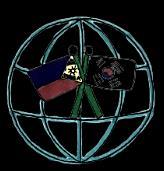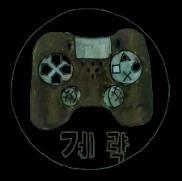






(Quarter 1-3)

Special Program in Foreign Language-Korean

Dr. Jeazelle C. De Gala taught the Korean Language among Filipino learners in one of the Public Secondary Schools in Dacanlao Gregorio Agoncillo National High School from June 2019 to the present. She is also the Learning Resource Management (LRMs) District and School Coordinator, the Special Program in Foreign Language SPFL-Coordinator of her school, an English Teacher of different Grade Levels from 2015 to the present, and she was a former English and Filipino Instructor in the Inter-Global College Foundation from 2013-2015. She received her Korean Language Completion Training at Kyung Hee University in Seoul, Korea, and other Special Program in Foreign Language (SPFL) Scholars in Region IV-A, Calabarzon.
She has published different research in the Philippines and Internationally. As a researcher, her written research articles about English, Research Writing, and the Korean Language include Contextual Clues as a Strategy for Improving Reading Skills; Problems Met in Learning Grammar, Challenges and Practices in Conducting Action Research and its Relation to School Performance, Development of Supplementary Materials in Teaching the Korean Language in the Philippines, Dialogic Reading in improving reading appreciation among the learners, Book Reporting and students’ sharing of feedbacks as a strategy in improving reading skills among the learners, and on-going research entitled ‘ Korean Language: Opportunities and Challenges in the province of Batangas. She received the 2022 Gawad Balisong Outstanding Researcher award and the 2023 Gawad PatnugotOutstanding Researcher-JHS award.
As an author of books, she published different English and Filipino books among college students, including Writing in Discipline, Study and Thinking Skills, Komunikasyon sa Akademikong Filipino, Retorika, and Pagbasa at Pagsulat. Dr. De Gala holds a Doctor of Philosophy in Educational Management (University of Batangas), Master of Arts in Educational Management (Southern Luzon State University), Bachelor of Arts in Secondary Education Major in English (Manuel S. Enverga University Foundation), and Korean Language Scholar (KyungHee University, Korean Cultural Center).
This supplementary material for teaching Korean to Filipino language learners will suit the learning modalities of 21st-century learners by incorporating different strategies that will improve the macro skills of the learners in reading, speaking, listening, viewing, and using multimedia technology, such as integrating websites and applications, in the teaching and learning process. The module's lessons draw from the 1st to 3rd Quarter Most Essential Learning Competencies for Foreign Language designed for Korean 7.
In creating the module, the author, a scholar under the Special Program in Foreign Language-Korean, drew from her extensive experience as both a teacher and a learner of Korean as a Foreign Language. She introduced innovative elements, including the localization of Filipino romanization for Korean words, K-Trivia about Korean culture, and connections to Philippine culture. Additionally, she linked all the lessons through a website she created, titled SPFLKorean.net.
There are 12 lessons in this module which includes the following:
Lesson 1: Hangul “The writing system of the Korean language”
Lesson 2: Korean Culture 문화 유용한 표현 (Useful expressions)
Lesson 3: 자기소개 (Self-Introduction)
Lesson 4: 숫자 Numbers
Lesson 5: 고유어 수 Native Korean Numbers
Lesson 6: 시간 Time
Lesson 7: 시간 Time Month, Day and Week 월, 일, 주
Lesson 8: Verb 동사
Lesson 9: Korean Culture and Philippine Culture 한국 문화와 필리핀 문화
Lesson 10: 신체 부위 Body Parts
Lesson 11: 색 Colors
Lesson 12: Suggested Strategies in Learning Korean Language 한국어 학습 전략 제안
It is expected that this Korean Language Guide for Filipino Korean Language Learners may:
Providelessonsthatarelocalizedandcontextualized; Apply appropriate strategies and activities, on the different lessons based from themostessentiallearningcompetencies; Providesomepracticesandtipsonhowtoteachthelessonsandhowtoimproved theirKoreanLanguageSkills, AccommodatesmultiplelearningstylesinteachingKoreanlanguage; IntegrateFilipinoculturetoKoreancultureforLanguageAppreciation. Include the illustrations created by Filipino Language learners in some of the lessons.
These are some of the guides in using the module.

Developing the Writing Skills

Developing the Listening Skills

Developing the Speaking Skills

Developing the Technological Skills through the utilization of Applications in learning
Developing the Grammar Skills

Developing Korean Culture Appreciation

Developing the Reading Skills
Developing the Technological Skills through Website ‘SPFLKorean.net”


Developing the Vocabulary Skills
Developing Cooperation through Games
(Korean History and Basic Facts)
Recall the statement below, write TRUE if the answer is correct, and FALSE if the statement is wrong.
Select the correct color and name it in the blank provided
(Korean Borrowed Words in English)
Identify the correct answer and write it in the blank provided
(Verb)
Distinguish the correct verb and write its conjugation in the blank provided.
Application Month, Days, and Year 월,
Demonstrate your understanding by writing the correct month, date, and year with proper grammar.
? (How much?)
Construct an answer in the box provided on how to write the correct price when buying any Korean item.
Part VI. (AN): VERB
Directions: 올바른 동사를 구별하고 제공된 빈칸에 활용형을 쓰십시오.
Distinguish the correct verb and write its conjugation in the blank provided.









Illustrated by Ehya Joemella Gumapac
Parents Signature
SPFL7LAP-Ic-3: Recognizes the sound of every given letter
SPFL7LAP-Id-4: Recognizes the letters of the alphabet through pictures:
-Read letter given
- Read basic words correctly
SPFL7LAP-Ie-5
Recognizes the correct pronunciation of the alphabet

In this lesson, the Filipino Korean as a Foreign Language Learners will be able to: recognize the sound of each given letter; identify the letters of the alphabet through pictures; read the given letters; correctly read basic words; and recognize the correct pronunciation of the alphabet. Before learning about Hangul (한글) or the Korean alphabet (한국어와 한글), learners should first have some background knowledge about it.

This lesson will also focus on how the alphabet should be read from a Filipino perspective and will not rely on the Romanization of Korean letters, which is erroneous in pronouncing Korean sounds or ‘Hangul’. Romanization is the practice of representing Korean sounds with Latin letters. Non-native speakers of Korean, especially beginners, often rely on this system to pronounce words. However, studies and the author's experience as a Special Program in Foreign Language-Korean Scholar have shown that Romanization does not aid in learning the correct pronunciation of words. Instead, it can hinder understanding of “Hangul.” Therefore, one of the innovations in this lesson is to create a “Romanization that suits Filipino learners,” based on how they pronounce the Filipino alphabet.

이름(Name):___________
날짜 (Date): __________ 점수 (Score): __/__.
Directions: 친구와 함께 Pinoy Henyo 를 플레이할 수 있으며 이 레슨에서
배운 일부 어휘가 포함됩니다 With your friends, you may play Pinoy Henyo, which will include some of the vocabulary that you have learned from this lesson.


부여하십시오. What are the words that you have discovered in this game? Kindly enumerate and give its meaning.
Word Meaning Word Meaning
Parents’ Signature

Practice activity 5 (연습)
이름(Name):___________
날짜 (Date): __________ 점수 (Score): __/__.
Directions: 다음 모음을 소리 내어 읽고 쓰세요. Read aloud and write the words in the box provided.
1. 올링 uling
2. 이사 isa
3. 올랍 ulap
4. 아마 ama
5. 이나 ina
6. 여여 yoyo
7. 럴러 lolo 럴라 lola
8. 아소 aso
9. 다가 daga
10. 푸 사 pusa
Parents’ Signature




To access the educational videos, and interactive PowerPoint presentations of this lesson, the learners may scan the QR code, you will be directed to the website innovated by the author called SPFLKOREAN.NET.





MELC
Communicates using basic greetings and expressions
Now that you know how to read consonants and vowels, you must also learn some useful expressions that you can use in daily communication. Mastering these expressions will help you express everyday interactions more smoothly and confidently, whether you're greeting someone, making a request, or engaging in casual conversation.
KOREAN PHRASE LOCALIZED ROMANIZATION ENGLISH MEANING KAHULUGAN SA FILIPINO
COMMON PHRASES USED IN COMMUNICATION.
안녕하세요? Anyonghaseyo Hello, Good morning, Good afternoon, Good evening Kamusta, Magandang Umaga Magandang Hapon Magandang Gabi
감사합니다 Kamsahamnida Thank you. Salamat.
미안합니다. Miyanhamnida I am sorry. Ipagpaumanhim.
지냈어요? Jal jinesoyo How have you been? Kamusta kana?
오래간만이
에요
안녕히 가세요.
안녕히 계세요
Orekanman iyeyo Long time no see! Ang Tagal nating Hindi nagkita.
Anyonghi gaseyo Goodbye (said by the person staying)
Anyonghi geseyo Goodbye (said by the person leaving)
Paalam na (Sinasabi kapag ikaw ay aalis sa isang lugar pero sya ay mananatili sa lugar na iyon)
Paalam na (Sinasabi kapag ikaw ang mag-papaalam umalis)
천만에요. Chonmaneyo You’re welcome. Walang anuman
괜찮아요. Kenshanayo It’s okay. / I’m okay. Ok lang.
안돼요. Andweyo No! (strong) / Hindi pwede.
Hindi! (Pagpapakita ng hindi pag-sang ayon) Hindi pwede.
문법 Grammar
‘이에요/예요’ comes after the noun to express a statement or question. ‘이에요’ is used when the preceding noun ends with a consonant. ‘예요’ is used when the preceding noun ends with a vowel. This grammar is also an example of a be verb in English.
‘이에요’ Ending with a consonant ‘예요’ Ending with a vowel
저는 필리핀 사람 이에요.
(Ako ay Filipino)

어휘와 표현 Vocabulary Expressions
저는 의사예요
( Ako ay Doktor)

한국 사람 Korean
필리핀 사람 Filipino/Filipina
중국 사람 Chinese
일본 사람 Japanese
베트남 사람 Vietnamese
몽골 사람 Mongolian
태국 사람 Thai

Illustrated by:


K-Trivia
If you will try to analyze one example of a nationality like “한국 사람" ‘한국’, means Korea, it stands for the country, while ‘사람’, means people. Combining the two words, you will get the meaning of Korean for “한국 사람" .
Parents’ Signature

이름(Name):_________
날짜 (Date): __________ 점수 (Score): __/__.
Directions: 급우들에게 이름, 직업, 국적을 물어보세요 . Ask your classmates their names, occupations and nationalities.

Illustrated by: Xiaozhen Gomez
5 Excellent Effectively integrating the correct grammar particle required in the lesson.

4 Very Proficient Accurate in integrating the correct grammar particle required in the sentence.
3 Proficient Commit some errors in integrating the correct grammar particle in a sentence.
2 Adequate Commit frequent grammatical errors of integrating the correct particle in a sentence.
1 Limited Did not include the correct grammar particle required in the lesson.
SCORE
DELIVERY
Effectively and accurately deliver the purpose of the lesson with full confidence.
Accurately deliver the purpose of the lesson with full confidence.
Accurately deliver the purpose of the lesson
Deliver the purpose of the lesson with minimal errors.
Lack of confidence in delivering the purpose of the lesson.
Parents’ Signature

Practice activity 1 (연습)
이름(Name):___________
날짜 (Date): __________
Directions: 함께해요 Join Us
점수 (Score): __/__.

Illustrated by Krish Angeli Garcia
✓ Together with your classmates, play ‘3, 6, 9’ game.
1. The students will be required to sit in a circle. Then the teacher may choose the student who will start the game.
2. The student who starts the game will say 1, then next student will say 2. The third person will not say 3, but instead must clap. Keep going back and forth like this, saying the numbers
3. If there is a 3, 6, or 9 in a number-like 3, 6, 13, 16, 19, they just need to clap, without saying the number.
문법 Grammar ‘하고’
’하고’ is used after nouns to connect other nouns as having equal importance and usually used in spoken language.
Noun 1
Noun 2

어휘와 표현 Vocabulary Expressions
물건 Things to Shop For…






Illustrated by: Francheska Contreras
In this lesson, this will introduce some of the basic verbs 동사, in Korean language, Contextualize Romanization; English Meaning; Kahulugan sa Filipino; and Basic use in a sentence.
Korean Verb Contextualized Romanization

오다

English Meaning Kahulugan sa Filipino Basic Use in a sentence
Ka-Da To Go Pumunta
U-Da To Come Dumating
저는바탄가스에 가다. (Jonun Hangsang Batangas-eh KADA) I go to Batangas Pumunta ako sa Batangas
학교에 오다. (hakyu-eh ODA) Come to school Dumating sa Paaralan
사다 Sa-Da To Buy Bumili 저는 카펜바라코를


사다 (Jonun Kapeng Barako rul SADA) I buy kapeng barako. Bibili ako ng Kapeng Barako. 보다 Bu-DA To watch Manuod 저는 한국 드라마를 보다 (Jonun Hanguk Drama rul B0DA) I will watch Korean Drama. Manunuod ako ng Korean Drama.
Illustrated by Carliana Maxine Endozo


In this lesson, you will have an indepth understanding of Korean Culture in comparison with Philippine Culture.
One of the benefits of learning a new language is not only acquiring that language but also appreciating the beauty of its culture. As Filipino learners of the Korean language, you will gain a greater appreciation for your language by understanding how Koreans show patriotism for their country, their love for their language, and their dedication to their work.
In Korea, time is highly valued. If you have an appointment, you must be punctual and adhere to schedules, even in the face of obstacles. In contrast, in the Philippines, many Filipinos are known for practicing “Filipino Time,” which means that some people may arrive exactly on time or occasionally be late for appointments. Therefore, learning Korean provides Filipinos with an opportunity to better appreciate the concept of “TIME.”
In terms of their cultures, both Koreans and Filipinos hold great respect for those older than themselves, which is evident in their actions. In the Philippines, this respect is shown through the use of “Opo” and “Po” and by placing the elder’s hand on one’s forehead as a sign of respect, known as “Pag-mamano.” On the other hand, in Korea, respect for older individuals is demonstrated by using formal language when speaking to them, as well as by bowing to show respect. This formality also applies to people of higher status or rank. Additionally, in Korea, when giving or receiving something, it is customary to use both hands

어휘와 표현 Vocabulary Expressions

색칠하기 Color in Korean


검정색- Black 갈색- Brown 회색- Gray


파란색- Blue 초록색- Green

분홍색- Pink



주황색- Orange

빨간색- Red 하늘색- Sky-blue

하얀색- White 노란색- Yellow
One of the strategies to improve the vocabulary and retention of the KFLs is through the implementation of “Battle of Korean Words”- this is a game strategy, that uses a small whiteboard, and marker by each group, at the end of every lesson they have a battle or a contest, about the retention of Korean words, grammar, and how to write a sentence using that word. In playing the activity, if you have thirty-five (35) students, the class can be divided into 7 groups, each group is required to have a whiteboard and a marker. They are asked to choose their member who’s going to play in the Easy, Average, and Difficult round. All the members must participate in every level, they are not allowed to repeat the player, in each round, the Game Master is the Filipino-Korean teacher, and each member is required to have the “BANTAY or GUARD”, during the game for fairness, of who is the first one to raise their answer. Round
Easy
쉬운 수준
보통 수준
어려운 수준
The KFLs players are required to write the English word of the Korean word that will be read by the Game Master. The required time for this round is 5 seconds.
The KFLs players are required to write the Korean character of the word that will be read by the Game Master. The required time for this round is 10 seconds.
The KFLs players are required to write the Korean word, and write that in a sentence including the grammar that will be read, by the Game Master. The required time for this round is 30 seconds.
Each correct answer is equivalent to 3 points.
Each correct answer is equivalent to 5 points.
Each correct answer is equivalent to 10 points.
Through this module I learned the following competencies:
Recognizes the sound of every given letter
Recognizes the letters of the alphabet through pictures
Recognizes the correct pronunciation of the alphabet
Introduces oneself (name, age, address)
Communicates using basic greetings and expressions related to: self – family and home – friends – school and community.
Recognizes numbers 1-100
Names different body parts, commonly used objects, and places through listening
Describe people, places and things using common adjectives
Describe objects using colors.
Recognize time (seconds, minutes, hours)
Recognize days in a week
Recognize months in a year
This module helps me to:
Parents’ Signature
Yes No
Choi, M (2023), The Evolution of Vowel Shapes in Korean. Retrieved from: http://organickorean.com/the-evolution-of-vowel-shapes-inkorean/?ckattempt=1
De Gala, J (2022), SPFLKorean.net website. Retrieved from: https://bit.ly/3GuNLqs
De Gala J (2022), Online Korean Language Learning: Opportunities and Challenges in the Division of Batangas. Regional Research Committee DepEd Region IV-A CALABARZON for the Basic Education Research Fund BERF-5th Cycle Commencement).
De Gala J (2021), Development of Supplementary Materials in Teaching Korean Language in the Philippines. Regional Research Committee DepEd Region IV-A CALABARZON for the Basic Education Research Fund BERF4th Cycle Commencement).
Special Curricular Programs, Most Essential Learning Competencies (MELCs)
The National Institute of Korean Language, (2013), 세종한국어 1.King Sejong Institute.
From Overseas Korean 영어권 (2017). 1-1. 교사용 지도서 재외동포를 위한
Most of the activities requires the use of rubric for performance and written assessment



For inquiries or feedback, please write or call:
DacanlaoGregorioAgoncilloNationalHighSchool
DacanlaoCalacaBatangas,CalacaSub-OfficeCity MobileNumber:09778352220
EmailAddress:301097@deped.gov.ph jeazelle.degala@deped.gov.ph

